Common Signs of a ‘Gluten Allergy’ You Should Watch Out For
The word “gluten” has become such a buzzword in recent years, most likely because of the sudden popularity of the gluten-free diet that’s been endorsed by famous personalities. Before you consider trying this diet, read this page first to learn about gluten, and how it can negatively impact your body and health in the long run.
What Is Gluten?
A type of protein, gluten is composed of glutenin and gliadin molecules that form an elastic bond when mixed with water. Gluten is highly noted for its adhesive abilities that can maintain a compact structure for holding bread and cakes together, and providing a spongier texture. This ability isn’t surprising, considering that the word “gluten” is derived from the Latin word for “glue.”
While it does wonders for these foods, the same cannot be said for your body. Research has shown that gluten can be quite harmful for you because of the vast range of complications it might cause (more on this to come in a while).
What Does Gluten Do to Your Body?
A major caveat linked to gluten is its tendency to impede proper nutrient breakdown and absorption from foods, regardless if they have gluten or not. This may prevent proper digestion because excess gluten leads to the formation of a glued-together constipating lump in the gut.
Afterward, the undigested gluten prompts the immune system to attack the villi, or the fingerlike projections lining your small intestine.1 This may lead to side effects such as diarrhea or constipation, nausea and abdominal pain.
Excessive gluten consumption and further small intestine damage and inflammation may predispose a person to nutrient malabsorption, nutrient deficiencies, anemia, osteoporosis, other neurological or psychological diseases, and complications linked to the skin, liver, joints, nervous system and more.
What Are the Types of Food That Contain Gluten?
Gluten is predominantly found in whole grains like rye, barley, triticale and oats; in wheat varieties like spelt, kamut, farro, durum; and in other products like bulgar and semolina.2 Wheat-based flours and byproducts that also contain high quantities of this protein include:3,4,5,6
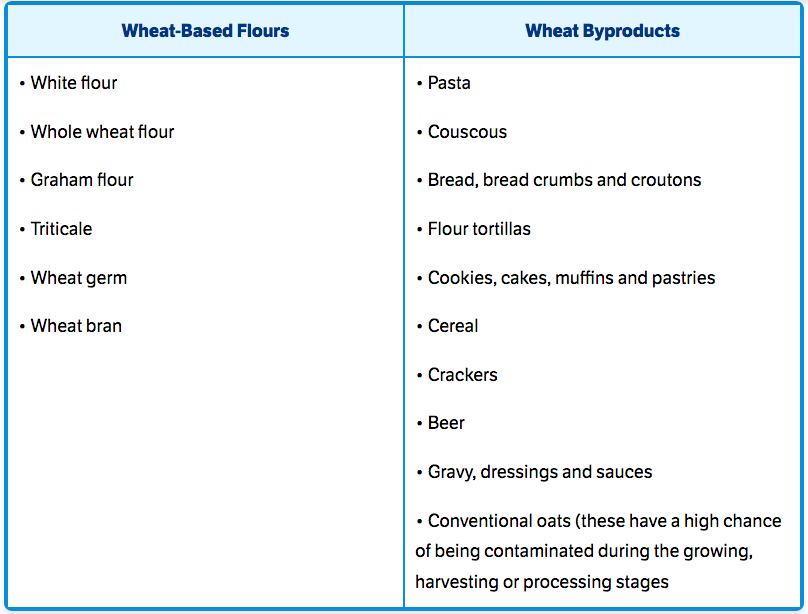
If there’s another compelling reason why you shouldn’t eat processed foods, it’s because these items often contain gluten. Here are examples of foods with gluten, even though they’re not made from grains:7,8
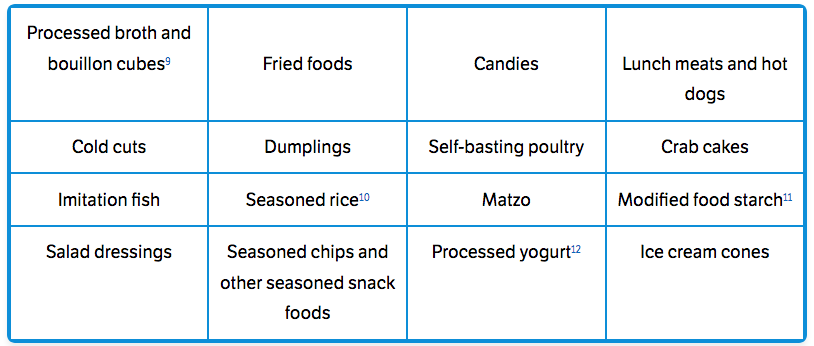
Even worse, manufacturers deceive customers by “hiding” gluten products like wheat under other names in food labels, such as:13,14
• Malts
• Starches and other derivatives
• Hydrolyzed vegetable protein (HVP)
• Hydrolyzed wheat protein15
• Textured vegetable protein (TVP)
Common Signs of a ‘Gluten Allergy’ You Should Watch Out For
Consuming too much gluten can prompt various complications, such as a gluten allergy, wherein the immune system produces “weapons” to combat gluten in your system. However, a gluten allergy is not to be confused with gluten intolerance, gluten sensitivity16 or celiac disease.17
It is quite similar to other food allergies, since these are all responses to a particular allergen. Some of the most common gluten allergy symptoms are:
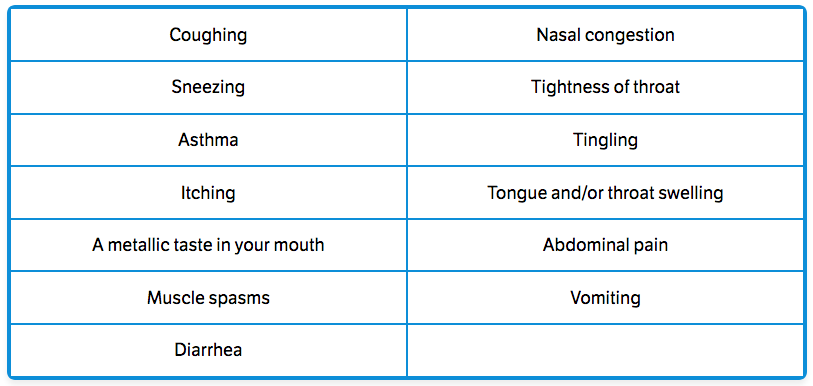
As the book “Gluten-Free Cooking for Dummies” further highlights, a gluten allergy may lead to adverse effects such as anaphylaxis or an anaphylactic shock that may affect different organs. People may experience agitation, hives, breathing problems, reduced blood pressure levels, fainting or even death, if the reaction is very severe.18
Warning Signs of Gluten Intolerance
Should the immune system have an unusual response to gluten in your system, then it might be a sign that you have gluten intolerance.19 Sometimes it can be mistaken for celiac disease (another gluten-related disorder) or a wheat allergy.20
The root cause of a gluten intolerance is not fully understood, although it has been linked to the digestive system, compared to celiac disease where a genetic link has been found.21
Typical gluten intolerance symptoms include bloating, belly pain, diarrhea, tiredness and a general feeling of being unwell. Someone with a gluten intolerance might also experience these indicators, although these are less frequent and already affect areas beyond the gut:

If you or someone you know experiences any of these symptoms, seek medical attention immediately. This will help you determine whether you have gluten intolerance or if the symptoms occur because of other health reasons.
This greatly applies if you or someone you know has severe belly pain. An extreme stomachache is not a sign of gluten intolerance, so it might be due to another potentially devastating disease that may require immediate treatment.
Having gut-related symptoms checked immediately may be helpful too, as numerous conditions that target the gut can overlap with other diseases. Fortunately, these can be examined during a checkup and your doctor may rule out other causes.
Take note that symptoms of gluten intolerance are generally similar to those of celiac disease, although the reactions that people with these conditions experience aren’t identical.
To diagnose a gluten intolerance, it’s important that you continue eating your usual meals, especially if it’s abundant in foods with gluten. This could help the doctor determine the main cause of the symptoms. An inaccurate diagnosis might occur if the patient decides to stop eating gluten-loaded foods prior to, or during, a consultation.22
Common Indicators of Gluten Sensitivity
In various studies, gluten sensitivity is also called non-celiac gluten sensitivity (NCGS) as celiac disease patients are sensitive to gluten too.
The difference between a gluten sensitivity and celiac disease is that the former may be triggered not just by wheat, but by other grains like rye and barley, too, as these grains are known to have the glutenin and gliadin proteins (or protein fragments) also found in wheat.23
Typical symptoms of gluten sensitivity include nausea, skin irritation, bloating and gas, brain fog, and fatigue. However, these indicators can widely vary and may also occur alongside gynecologic conditions, lactose intolerance and irritable bowel syndrome.24
Because there is no specific laboratory test for gluten sensitivity, your physician will have to rule out other possible causes. In some cases, patients may need to be checked for wheat allergy or celiac disease. Should test results be negative, a gluten-free diet may be advised.25
However, if any of the aforementioned tests deliver positive results, then you may want to continue eating gluten-rich foods for a more accurate diagnosis.26
Why a Gluten-Free Diet Works
A gluten-free diet is an important course of action for combating gluten-related disorders, and picking gluten-free foods is the first step in doing so. Because there are foods that are incorrectly labeled “gluten-free,” it may be quite tricky at first to select the correct items.
A set of guidelines on proper gluten-free labeling standards released in 2013 by the Food and Drug Administration (FDA) may help. The organization states that for a food product to bear the gluten-free label and be considered such, it must be:
• Naturally gluten-free — Rice, non-GMO corn, quinoa, sorghum, flax and amaranth seed are naturally gluten-free grains.
• Refined to remove gluten — Gluten must be removed from any gluten-containing grain. As such, the final product should not contain more than 20 parts per million (ppm) of gluten.
Extreme vigilance is only likely if you have celiac disease, since exposure to gluten can cause sickness and threaten your health in the long run. What’s great about a gluten-free diet is that nearly everyone can benefit from it, whether you have a gluten intolerance or not. Grains, even whole sprouted varieties, tend to cause many problems because of the following factors:

Grains have high net carbs, so removing them from your diet can help improve mitochondrial function. Taking care of your mitochondrial health is important if you want to reduce your risk for problems linked to insulin resistance, such as being overweight and having high blood pressure levels, as well as diseases like Type 2 diabetes, heart disease and cancer.
Prior to beginning a gluten-free diet, consult a dietitian or health expert who can give advice on how to effectively avoid foods with gluten while eating a healthy and balanced diet.27
Best Foods to Eat if Following a Gluten-Free Diet
Once you’re given the go-signal to try a gluten-free diet, stock up on these natural and unprocessed foods:28,29
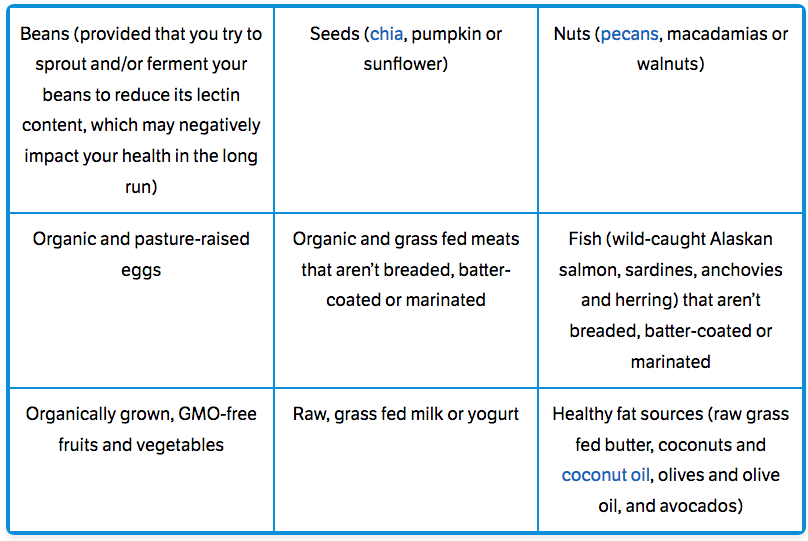
If you think going on a gluten-free diet limits eating choices and preparations, you’d be surprised to know that it won’t. Type “gluten-free recipes” on a search engine and you’ll see a wide variety of gluten-free recipes, ranging from savory to sweet. A good and delicious example is this Coconut Flour Almond Meal Pancakes Recipe from MindBodyGreen:30
Coconut Flour Almond Meal Pancakes Recipe
• 1/2 cup Dr. Mercola’s coconut flour
• 1/3 cup almond meal
• 1 1/2 teaspoons baking powder
• 4 organic, pastured eggs
• 1 tablespoon Dr. Mercola’s coconut oil, melted
• 1/3 cup raw cow’s milk or coconut milk
• 1 teaspoon vanilla extract
• A pinch of Dr. Mercola’s Himalayan salt
• 1 to 2 tablespoons organic, raw grass fed butter, plus more for serving
• Pure maple syrup to drizzle (optional)
Cooking Directions
1. In a large bowl, mix all the dry ingredients: the coconut flour, almond meal, baking powder and salt.
2. Slowly whisk in the wet ingredients: the eggs, coconut oil, milk and vanilla. Mix until the batter is smooth. (If it feels a little dry, add more milk until it reaches the consistency you’re after).
3. Heat a large skillet over medium high heat. Add the butter and allow it to melt, then add scoops of batter (about a 1/4 cup each) for silver dollar pancakes. Cook for about a minute on each side until golden brown. Slather with butter and drizzle maple syrup as desired.
This recipe makes about 16 small pancakes.
Preparation time: 10 minutes
Cooking time: 10 minutes
Additional Reminders When Following a Gluten-Free Diet
Gluten Free & More magazine highlights these important tips for people who are following a gluten-free diet:31
• Read labels carefully — Knowing how to read labels properly will greatly help if you’re following a gluten-free diet. Ideally, never assume something is gluten-free even if the word “gluten” isn’t anywhere in the list.32 As mentioned earlier, some manufacturers purposely use other names to hide gluten in their products.
• If you’re in doubt, don’t buy the product — If you cannot verify that the product is free of grains, don’t buy or eat it at all. The same principle applies if you cannot find an ingredients list on the product.
• Remember that being wheat-free doesn’t automatically make a food gluten-free — This is because spelt, rye or barley-based ingredients, all of which contain gluten, may be used in products with a wheat-free label on them.
• Introduce new foods slowly — Ensure that you incorporate only one new food at a time, and take note of symptoms before adding another item.
• Be a “food detective” — Call, email or write a letter to a food manufacturer to verify a product’s ingredients. Take note of the ingredient and the lot number of the food. Once you are in touch with a representative, clearly state your concerns and be persistent, polite and patient.
https://articles.mercola.com/what-is-gluten.aspx
Sources and References
1 Celiac Disease Foundation, “What Is Celiac Disease?”
2 Grains & Legumes Nutrition Council, “Gluten in Grains”
3, 7 Celiac Disease Foundation, “Sources of Gluten”
4 The Spruce Eats, October 3, 2017
5 VeryWellFit, January 21, 2018
6, 8 The Gluten Free Diet, “Foods Containing Gluten”
9 “Gluten-Free, Hassle Free: A Simple, Sane, Dietician-Approved Program in Eating Your Way Back to Health,” November 23, 2009
10 Celiac Disease Resource Center, “Is Rice Gluten Free?”
11, 13 “The Resourceful Mother’s Secrets to Healthy Kids: Understand Food, Understand Your Child,” December 4, 2014
12 VeryWellFit, December 14, 2017
14 Kids With Food Allergies, March 2015
15 WebMD, February 25, 2014
16 “No Grain, No Pain: A 30-Day Diet for Eliminating the Root Cause of Chronic Pain,” January 26, 2016
17, 26 Coeliac UK, “Gluten Sensitivity”
18 “Gluten-Free Cooking For Dummies,” April 4, 2011
19, 24 My Life Stages Sutter Health, “What is Gluten Sensitivity?”
20 American Academy of Allergy Asthma & Immunology, “Gluten Intolerance”
21 Celiac Disease Foundation, “Screening”
22 Medical News Today, April 24, 2017
23 The World’s Healthiest Foods, “Is Gluten Sensitivity the Same Thing as Wheat Allergy?”
25 Beyond Celiac, “Gluten Sensitivity Testing”
27, 28 Mayo Clinic, November 23, 2017
29 VeryWellFit, February 24, 2018
30 MindBodyGreen, March 3, 2015
31 Gluten Free & More, February 24, 2017
32 Gluten-Free Survival Guide, “Gluten-Free Food: What to Eat and Avoid”

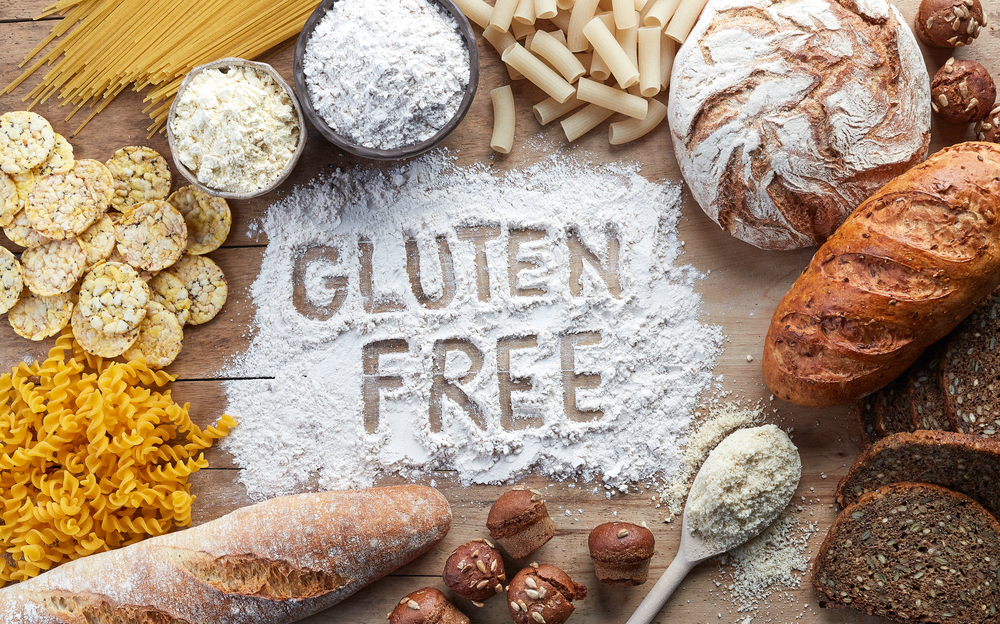



Leave A Comment